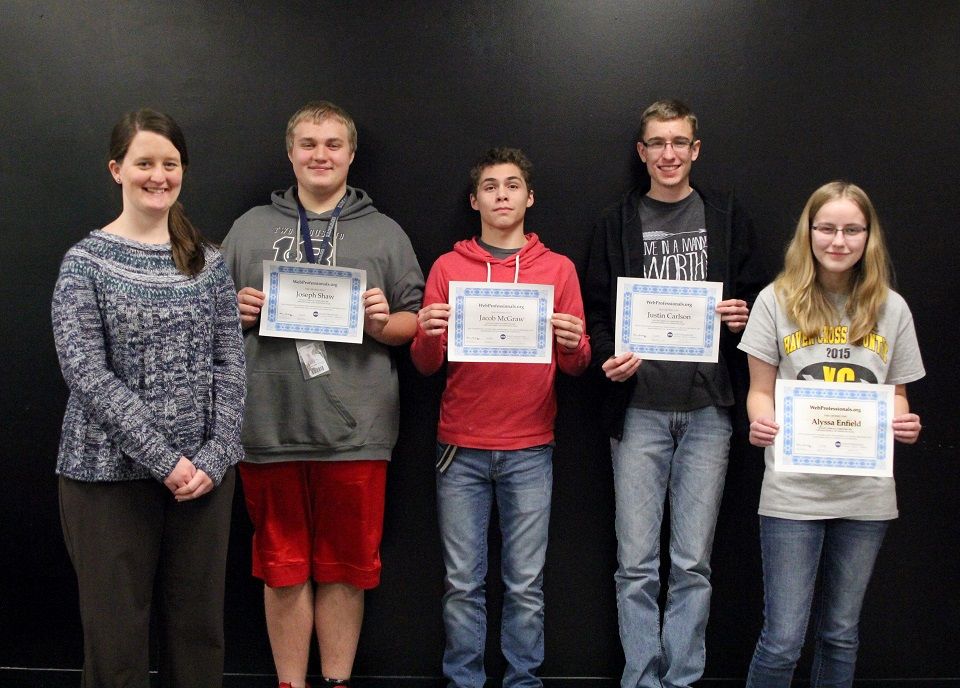Blog
8 Uncommon STEM Careers To Help You Better Understand STEM Education

In the last decade, you have likely heard of STEAM or STEM careers. The growing impact these terms have on society year after year can’t be dismissed. Schools across the country are developing specialized programs to help prepare today’s youth for tomorrow’s future.
Is this just because STEM careers boast some of the highest paying jobs out there? While that may be true, that is simply one benefit to acknowledge. STEM education leads to careers that create new innovation, infrastructure, and overall growth.
How Does STEM Education Relate To These Fields?
The purpose behind STEM / STEAM education is to show how all of the subjects relate to one another in some way. STEAM stands for science, technology, engineering, arts, and mathematics. With “STEM” the “A” is removed, but we believe art is important and should be included as well.
You may have heard of popular STEM fields and courses such as Computer Engineering, Biotechnology, and Programming just to name a few. The number of career paths available in STEM, however, go beyond what you may expect!
Did you know that being a chef in the culinary world can also be considered a STEM / STEAM based career? How can a culinary field possibly relate to computer engineering? The presentation of the next few fields should clear a few things up for you. Take a look at these unusual STEM careers to help you better understand STEM education.
Sustainable Landscape Designer
As more people become conscious of the importance of sustainability, the field of sustainable landscape design has grown in popularity. Sustainable landscape design is a field that focuses on creating outdoor spaces that are both aesthetically pleasing and environmentally friendly. With the rise of urbanization, there is an increased need for sustainable design in urban areas. Urban agriculture and edible landscapes are two examples of sustainable landscape design that are gaining popularity.
Urban agriculture is the practice of growing food in urban areas. This can be done through community gardens, rooftop gardens, and other urban farming techniques. Edible landscapes are outdoor spaces that incorporate edible plants such as fruits, vegetables, and herbs into the design. These landscapes can be both beautiful and functional, providing food for people and wildlife while also improving the environment.
Landscape designers get involved with water management, soil science, urban planning, urban food farming and production, urban wildlife environmental support, carbon neutrality, sound abatement and fighting urban heat island effects. If you want to make a difference in creating healthy outdoor environments, creating beauty and potentially reversing food deserts, then this career may be right for you. There are many benefits to being a sustainable landscape designer. The majority of sustainable landscape designers make between $41K and $61K per year.
If you are interested in a career in the horticulture and landscape industry, you will find lessons and projects in our Sustainable Landscape Design curriculum.
Audio/Sound Effects Engineer
Audio engineers and sound effects professionals are part of production teams in film, animation, game development, television, commercials, and even social media. Sound effect artists create simple or complex sound effects that reinforce the action and feel of a scene. Sound effects work has been around for a very long time. In fact one of the pioneers of sound production’s name, Jack Foley, was the inspiration for the name for those in the industry–”Foley” artists.
A Foley artist in the union is guaranteed a minimum of $2,773.12 a week, or $57.06 an hour, with 48.6 hours guaranteed per week. On average, audio and sound effect engineers
can expect to make $64K to $100K per year.
If you are interested in Sound Effects or Audio Engineering as a career, you will find lessons and projects in Game Testing in our
Web and Mobile Game Design curriculum, and our
Web Animation curriculum.
Video or Mobile Game Tester
Game testing is a crucial part of any game development. They communicate with game developers, coders, and graphic designers to identify and fix playability and game story issues. Many game testers use this step as a way to get hired into game design and game development. Game testers can be employees or independent contractors working hybrid or as remote working professionals.
Game tester positions typically are entry level positions in game development, and therefore new game testers can expect to make less than their game designer, developer, or more senior quality assurance comrades.
The average salary in the US is around $34K, with more experienced testers earning $44K.
More experienced quality assurance and video game testers can make up to $79K per year.
If you are interested in being a game tester as a career, you will find lessons and projects in game testing in our
Web and Mobile Game Design curriculum.
Zoologist
In this field, you will study the animal kingdom, its structure, and how it interacts with various ecosystems. Let’s not forget to mention that this is the perfect job if you want to spend time with exotic animals! This STEM career can have you working within a zoo, laboratory, or even a classroom. Zoology has many branches to work within, all of which, in some way, incorporate different aspects of STEM.
Some zoologists work to help preserve the life of a certain species of animal, while others may develop books and other educational materials to assist members of a team or research group. There are zoologists who even go on to teach at universities and publish journalistic reports on their discoveries and findings.
A deeper look into the zoology shows how the different aspects of STEM play a major role in being a zoologist. STEM has played a big part in helping zoologists better preserve and care for animal species across the world. The average salary for a Zoologist is $60K per year.
Chef & Flavor Chemist
Chefs are considered the artists of the food world. You could say this takes care of the “A” in STEAM education. What about the STEM part? As a chef or flavor chemist, you will be working with the combination of different food groups and ingredients.
Combining the ingredients into carefully measured portions, and applying the right cooking procedures requires a great deal of skill. You can find a number of accredited degree programs available to become a chef or flavor chemist, and there are a number of institutions dedicated to the culinary arts.
Food science, chemistry, and presentation all show heavy traces of the basic ideas of STEAM education. As a chef, you have many branches you can go into. (such as a pastry chef or fish cook) When it comes to a flavor chemist, it can be very competitive, however.
Chefs can earn anywhere from $25K and up per year, whereas a Flavor Chemist can earn well over $65K a year.
Ethical Hacker
Yes, there are actually good hackers out there! Ethical hackers help to test security by exploiting a company’s network to find the vulnerabilities. This STEM career is all about the good hackers versus the bad hackers. Be prepared to have extensive knowledge of computer systems.
If you’ve already grown up using computers on a semi advanced level, taking a computer science, networking, or programming course to improve your skills will put you well on your way in this field. This is one of the more important STEM careers in technology, as cyber security is an increasing threat in our evolving digital world.
Over the last 5 years alone, there have been dozens of stories about hackers obtaining sensitive information that they should not have accessed. The need for computer engineers to build the infrastructure is just as important as the need for ethical hackers to find the problems in the infrastructure!
An Ethical Hacker earns an average of $72K per year, but the salary range is large. Some earners report $24K per year, while some have even reported over $100K per year.
3D Printing Engineer
3D printing ( Additive Manufacturing ) has already begun to change our world, and we’ve only just begun to scrape the surface. This industry and its related fields may become some of the most innovative STEM careers over the next decade.
There are already stories of 3D printers printing functioning tools, prosthetic limbs, and even printing homes for people to live in! There are talks of 3D printers making food, and functioning organs to be implanted into humans. Let’s not forget that it's also cool to show off to your friends that you 3D printed a small trinket.
Today, there aren’t many fields related directly to additive manufacturing or 3D printing. However, there are a number of STEM fields that will greatly benefit your advancement in this career. Knowledge of mechanical and electrical engineering, 3D modeling, and industrial design all play an important role.
The average Additive Manufacturing Engineer salary in the United States range typically falls between $80,719 and $95,305.
3D printing is one of the more exciting, and new emerging industries we are looking forward to. Look at some of the cool achievements made with 3D printing! Just recently a nearly fully 3D printed rocket (Terran 1 About 85% of the rocket body and all 9 of its nine engines were 3D printed) lifted off from Cape Canaveral Space Force Station in Florida.
Machine Learning Engineer
Machine learning is another exciting STEM career field pushing our society into the future of artificial intelligence. Hollywood has spooked us with movies about the emergence of self-aware AI. In reality, machine learning is about applying methods to large data sets that personalize and optimize experiences.
There are plenty of machine learning applications that we all use every day but might not be aware of. Whenever you search for something on Google, buy something on Amazon, or browse through Facebook, machine learning is at work to personalize your online experience.
As a machine learning engineer, you will have to deal with a lot of data. Data management skills are a must, and knowledge of programming and computer science are also required. You will be writing algorithms to gather and analyze data. After this, the goal is to autonomously achieve the desired outcome, and continue to adapt.
Ai Robotics Engineer in the United States is $96,474 a year, and the average for a Machine Learning Engineer is $152,000.
Artificial intelligence and machine learning, like 3D printing, will certainly change our world in the near future. Here at CTE Learning, we’ve developed an Artificial Intelligence and Mobile Robotics course to help students learn more about AI.
Did You Know These Were STEAM / STEM Careers?
STEAM / STEM careers are still typically thought of in general terms. However, there are many career paths that we don’t know actually apply to many STEM subjects. STEM and STEAM are all about incorporating the subjects of science, technology, engineering, arts, and mathematics into old, and new industries. This introduces creative thinking, problem solving, innovation, and growth for the foreseeable future.
STEM’s growing influence in our everyday lives will only continue to become stronger. Next time you’re considering the difficulty of STEM related fields or careers, take another look. You’ll find that STEM is not as narrow as you think, and is always expanding. There is a STEM career out there for you that will help us shape the world of tomorrow.
Share To
Get in touch with us today!
You can book a demo directly using Calendly, call us directly at 913-764-4272 or 877-828-1216, or submit the form and we will reach out to you.
We look forward to helping you and your students.

Most Recent Posts




